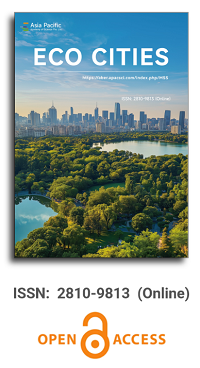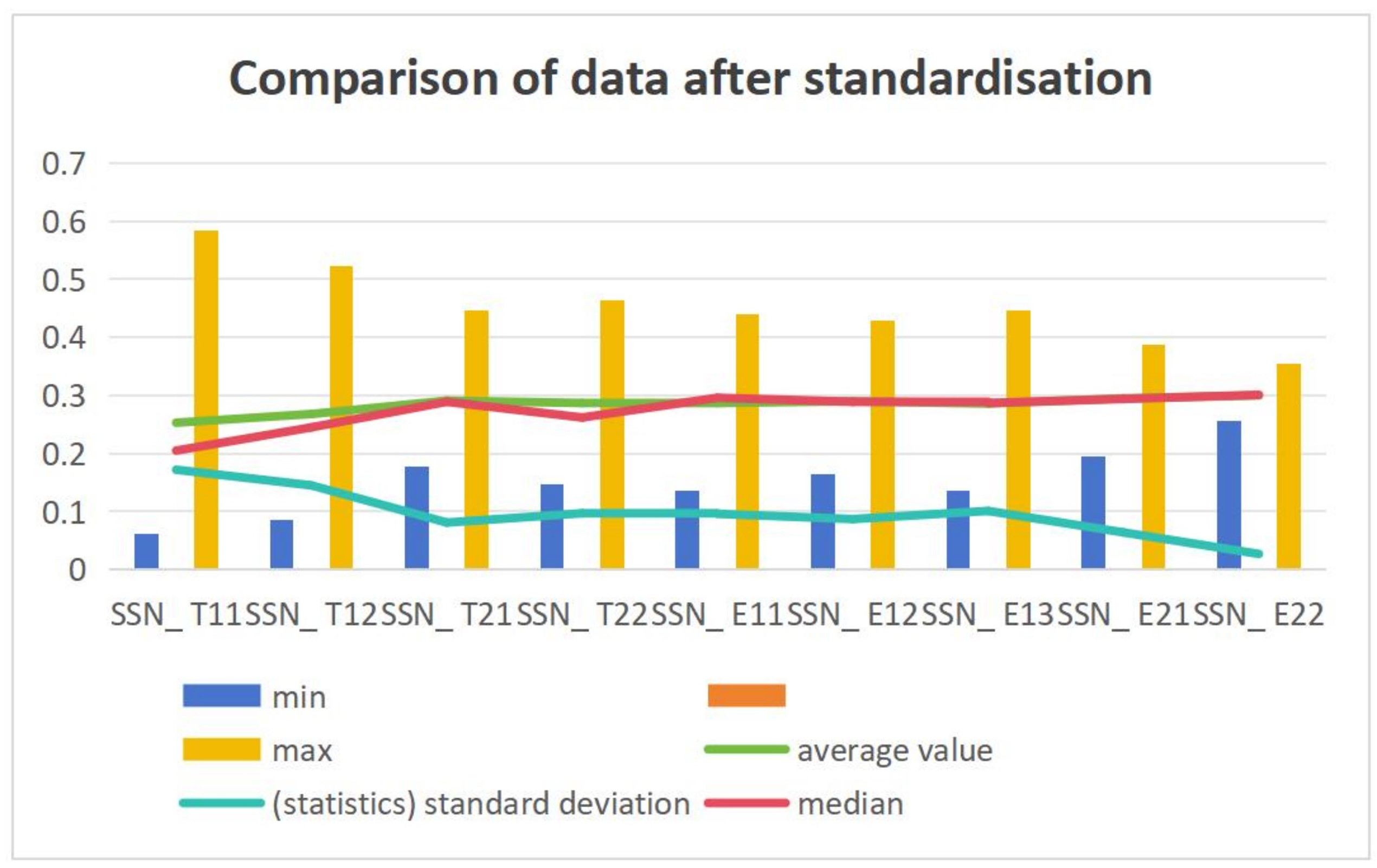


Including SDGs in low-carbon transport scenarios: A case of Udaipur
Vol 4, Issue 2, 2023
Download PDF
Abstract
Transportation is fundamental to shaping urban form and quality of life. The transport sector contributes to a quarter of global GHG emissions. It is integral to countries’ Nationally Determined Contributions (NDCs) to mitigate global warming or control warming beyond 2 ℃ or 1.5 ℃ above the pre-industrial level. Climate change mitigation in the transport sector demands a tailored approach for cities of the global south—recently urbanizing with increased dependence on motorization—incorporating social aspects of sustainability. The study examines the delivery of climate change mitigation and Sustainable Development Goals (SDG) in Udaipur’s passenger transport sector through six SDGs. Over and above the business-as-usual scenario, the two scenarios presented are the technology scenario, which recalibrates Udaipur’s available low-carbon mobility plan, and the SDG scenario, which addresses social transformations by applying assumptions derived from the primary survey in the city. The socially sensitive SDG scenario prioritizes the mobility demands of those with low or no mobility. It also enhances mobility by retaining the share of non-motorized transport (NMT), intermediate public transport (IPT), and public transport (PT) and regulating excessive use of private motorized vehicles. However, the SDG scenario causes a 26% increase in the vehicle kilometer traveled (VKT), a 24% increase in CO2 emissions, and a 29% decrease in other GHG emissions over the Technology Scenario.
Keywords
References
- Olszewski A. The impact of transport on urban form. Available online: https://www.jstor.org/stable/26148361 (accessed on 1 June 2023).
- Rodrigue JP. The Geography of Transport Systems, 5th ed. Routledge; 2020. doi: 10.4324/9780429346323
- Stone SA, Strutt A, Hertel TW. Assessing socioeconomic impacts of transport infrastructure projects in the greater Mekong subregion. SSRN Electronic Journal 2010. doi: 10.2139/ssrn.1658335
- Lu H, Zhao P, Hu H, et al. Transport infrastructure and urban-rural income disparity: A municipal-level analysis in China. Journal of Transport Geography 2022; 99: 103292. doi: 10.1016/j.jtrangeo.2022.103292
- Kasraian D, Maat K, Van Wee B. Development of rail infrastructure and its impact on urbanization in the Randstad, the Netherlands. Journal of Transport and Land Use 2015. doi: 10.5198/jtlu.2015.665
- Mattioli G, Roberts C, Steinberger JK, et al. The political economy of car dependence: A systems of provision approach. Energy Research & Social Science 2020; 66: 101486. doi: 10.1016/j.erss.2020.101486
- Alshammari TO, Hassan AM, Arab Y, et al. The compactness of non-compacted urban developments: A critical review on sustainable approaches to automobility and urban sprawl. Sustainability 2022; 14(18): 11121. doi: 10.3390/su141811121
- Carlton I. Histories of transit-oriented development: Perspectives on the development of the TOD concept real estate and transit, urban and social movements, concept protagonist. Available online: https://escholarship.org/uc/item/7wm9t8r6 (accessed on 1 June 2023).
- Joshi R, Joseph Y, Patel K, Gajjar S. Transit-oriented development: Lessons from Indian experiences. Available online: https://cept.ac.in/UserFiles/File/CUE/Working%20Papers/Revised%20New/36CUEWP-36_TOD%20Lessons%20from%20Indian%20Experiences.pdf (accessed on 1 June 2023).
- Liu Y, Nath N, Murayama A, et al. Transit-oriented development with urban sprawl? Four phases of urban growth and policy intervention in Tokyo. Land Use Policy 2022; 112: 105854. doi: 10.1016/j.landusepol.2021.105854
- Moreno C, Allam Z, Chabaud D, et al. Introducing the “15-minute city”: Sustainability, resilience and place identity in future post-pandemic cities. Smart Cities 2021; 4(1): 93–111. doi: 10.3390/smartcities4010006
- Abdelfattah L, Deponte D, Fossa G. The 15-minute city: Interpreting the model to bring out urban resiliencies. Transportation Research Procedia 2022; 60: 330–337. doi: 10.1016/j.trpro.2021.12.043
- Anenberg SC, Miller J, Henze DK, et al. The global burden of transportation tailpipe emissions on air pollution-related mortality in 2010 and 2015. Environmental Research Letters 2019; 14(9): 094012. doi: 10.1088/1748-9326/ab35fc
- Bakker S, Dematera Contreras K, Kappiantari M, et al. Low-carbon transport policy in four ASEAN countries: Developments in Indonesia, the Philippines, Thailand and Vietnam. Sustainability 2017; 9(7): 1217. doi: 10.3390/su9071217
- SLOCAT. Transport and climate change 2018: Global status report. Available online: https://www.slocat.net/wp-content/uploads/legacy/slocat_transport-and-climate-change-2018-web.pdf (accessed on 1 June 2023).
- IPCC. Framing and context. In: Global Warming of 1.5 ℃. Cambridge University Press; 2022. pp. 49–92. doi: 10.1017/9781009157940.003
- Fransen T, Song R, Tankou A, et al. Enhancing NDCs: Opportunities in Transport. World Resources Institute; 2019.
- Lah O. The barriers to low-carbon land-transport and policies to overcome them. European Transport Research Review 2015; 7(1). doi: 10.1007/s12544-014-0151-3
- Logan KG, Hastings A, Nelson JD. Transportation in a Net Zero World: Transitioning Towards Low Carbon Public Transport. Springer International Publishing; 2022. doi: 10.1007/978-3-030-96674-4
- Mahadevia D, Mukhopadhyay C, Lathia S, et al. The role of urban transport in delivering Sustainable Development Goal 11: Learning from two Indian cities. Heliyon 2023; 9(9): e19453. doi: 10.1016/j.heliyon.2023.e19453
- Tandale D. Caste, economic inequality, and climate justice in India. In: Human Rights and Economic Inequalities. Cambridge University Press; 2021. pp. 217–244. doi: 10.1017/9781009006545.009
- Khosla R, Bhardwaj A. Urbanization in the time of climate change: Examining the response of Indian cities. WIREs Climate Change 2018; 10(1). doi: 10.1002/wcc.560
- Kumar A, Chen LC, Choudhury M, et al. Financing health care for all: Challenges and opportunities. The Lancet 2011; 377(9766): 668–679. doi: 10.1016/S0140-6736(10)61884-3
- Jennings G. A justice- or rights-based approach to sustainable urban transport policy and prioritisation. In: African Centre for Cities (Panel 8). 2018.
- Lyons T, Ewing R. Does transit moderate spatial mismatch? The effects of transit and compactness on regional economic outcomes. Cities 2021; 113: 103160. doi: 10.1016/j.cities.2021.103160
- United Nations Environment Programme. Promoting low carbon transport in India – Low carbon comprehensive mobility plan: Udaipur. Available online: https://wedocs.unep.org/20.500.11822/31400 (accessed on 1 June 2023).
- MOUD. Study on traffic and transportation policies and strategies in urban areas in India. Available online: http://mohua.gov.in/upload/uploadfiles/files/final_Report.pdf (accessed on 10 October 2023).
- Alam MM. Creating Pro-Poor Transport: Connecting the Dots—Transport, Growth, and Poverty Reduction. World Bank; 2015.
- Vaz E, Venter C. The effectiveness of bus rapid transit as part of a poverty-reduction strategy: Some early impacts in Johannesburg. Available online: https://repository.up.ac.za/handle/2263/20221 (accessed on 1 June 2023).
- Venter C, Jennings G, Hidalgo D, et al. The equity impacts of bus rapid transit: A review of the evidence and implications for sustainable transport. International Journal of Sustainable Transportation 2017; 12(2): 140–152. doi: 10.1080/15568318.2017.1340528
- Baker J, Basu R, Cropper M, et al. Urban Poverty and Transport: The Case Of Mumbai. The World Bank; 2005. doi: 10.1596/1813-9450-3693
- Gaffron P. Urban transport, environmental justice and human daily activity patterns. Transport Policy 2012; 20: 114–127. doi: 10.1016/j.tranpol.2012.01.011
- Litman T. Transportation and public health. Annual Review of Public Health 2013; 34(1): 217–233. doi: 10.1146/annurev-publhealth-031912-114502
- Avery L, Regmi M, Joshi G, Mohanty C. Rural-urban connectivity in achieving sustainable regional development. In: Proceedings of the Intergovernmental 10th Regional Environmentally Sustainable Transport Forum in Asia; 14–16 March 2017; Vientiane, Lao People’s Democratic Republic.
- Koszowski C, Gerike R, Hubrich S, et al. Active mobility: Bringing together transport planning, urban planning, and public health. In: Müller B, Meyer G (editors). Towards User-Centric Transport in Europe. Springer; 2019. pp. 149–171.
- Chaix B, Kestens Y, Duncan S, et al. Active transportation and public transportation use to achieve physical activity recommendations? A combined GPS, accelerometer, and mobility survey study. International Journal of Behavioral Nutrition and Physical Activity 2014; 11(1). doi: 10.1186/s12966-014-0124-x
- Wanner T. The new ‘passive revolution’ of the green economy and growth discourse: Maintaining the ‘sustainable development’ of neoliberal capitalism. New Political Economy. 2014; 20(1): 21–41. doi: 10.1080/13563467.2013.866081
- Jain D, Tiwari G. NMT Infrastructure in India: Investment, Policy and Design. Federal Ministry for the Environment, Nature Conservation and Nuclear Safety, Federal Republic of Germany; 2013.
- Mahadevia, D. Gender sensitive transport planning for cities in India. UNEP; 2015.
- Dominguez Gonzalez K, Machado AL, Bianchi Alves B, et al. Why Does She Move? World Bank; 2020. doi: 10.1596/33466
- Chant S. Cities through a “gender lens”: A golden “urban age” for women in the global South? Environment and Urbanization 2013; 25(1): 9–29. doi: 10.1177/0956247813477809
- Mahadevia D, Lathia S. Women’s safety and public spaces: Lessons from the Sabarmati Riverfront, India. Urban Planning 2019; 4(2): 154–168. doi: 10.17645/up.v4i2.2049
- Verma M, Manoj M, Rodeja N, et al. Service gap analysis of public buses in bangalore with respect to women safety. Transportation Research Procedia 2017; 25: 4322–4329. doi: 10.1016/j.trpro.2017.05.283
- Allen H. Approaches for Gender Responsive Urban Mobility. GIZ-SUTP; 2018.
- Pomoni M, Laiou A, Plati C, et al. Future trends in transport workforce based on demographic, behavioural, cultural and socioeconomic factors. Transportation Research Procedia 2020; 48: 2811–2820. doi: 10.1016/j.trpro.2020.08.237
- Buckle S, Mirabile M, Jaber A, et al. Integrated policies for climate, air, ecosystems, energy, and transport. In: Systemic Thinking for Policy Making: The Potential of Systems Analysis for Addressing Global Policy Challenges in the 21st Century. OECD; 2020. pp. 44–53.
- Shaban A, Sattar S. Critical reflection on contemporary urbanization in India. Shelter 2016; 17: 31–39.
- Coelho K, Mahadevia D, Williams G. Outsiders in the periphery: Studies of the peripheralisation of low income housing in Ahmedabad and Chennai, India. International Journal of Housing Policy 2020; 22(4): 543–569. doi: 10.1080/19491247.2020.1785660
- Khayesi M. Vulnerable road users or vulnerable transport planning? Frontiers in Sustainable Cities 2020; 2. doi: 10.3389/frsc.2020.00025
- Charaniya S. A state-level framework for integrated land use and transport. In: Sethi M, Puppim de Oliveira JA (editors). Mainstreaming Climate Co-Benefits in Indian Cities. Springer; 2018. pp. 285–302.
- Macmillan A, Smith M, Witten K, et al. Suburb-level changes for active transport to meet the SDGs: Causal theory and a New Zealand case study. Science of The Total Environment 2020; 714: 136678. doi: 10.1016/j.scitotenv.2020.136678
- Shukla P, Dhar S, Pathak M, et al. Pathways to Deep Decarbonization in India. Sustainable Development Solutions Network (SDSN) and Institute for Sustainable Development and International Relations (IDDRI); 2015.
- Dhar S, Pathak M, Shukla P. Transformation of India’s transport sector under global warming of 2 °C and 1.5 °C scenario. Journal of Cleaner Production 2018; 172: 417–427. doi: 10.1016/j.jclepro.2017.10.076
- Schweizer VJ, Kriegler E. Improving environmental change research with systematic techniques for qualitative scenarios. Environmental Research Letters 2012; 7(4): 044011.
- Waisman H, Bataille C, Winkler H, et al. A pathway design framework for national low greenhouse gas emission development strategies. Nature Climate Change 2019; 9: 261–268. doi: 10.1038/s41558-019-0442-8
- Miller E. Traffic Analysis Zone Definition: Issues & Guidance. Travel Modeling Group, Transport Research Institute, University of Toronto; 2021.
- UNFCCC, GIZ and ICCT. Compendium on greenhouse gas baselines and monitoring: Passenger and freight transport. Available online: https://unfccc.int/sites/default/files/resource/Transport_0.pdf (accessed on 1 June 2023).
- Automotive Research Association of India. Indian Emissions Regulation. Automotive Research Association of India; 2021.
- MOHUA. Service level benchmarking in urban transport for Indian cities. Available online: https://mohua.gov.in/upload/uploadfiles/files/VoulmeI_Methodologyreport_final03.pdf (accessed on 1 June 2023).
- Fader M, Cranmer C, Lawford R, Engel-Cox J. Toward an understanding of synergies and trade-offs between water, energy, and food SDG targets. Frontiers in Environmental Science 2018; 6: 112. doi: 10.3389/fenvs.2018.00112
- Hernández-Orozco E, Lobos-Alva I, Cardenas-Vélez M. The application of soft systems thinking in SDG interaction studies: A comparison between SDG interactions at national and subnational levels in Colombia. Environment, Development and Sustainability 2021; 24: 8930–8964. doi: 10.1007/s10668-021-01808-z
Supporting Agencies
Copyright (c) 2023 Darshini Mahadevia, Saumya Lathia, Chandrima Mukhopadhyay
License URL: https://creativecommons.org/licenses/by/4.0/

This site is licensed under a Creative Commons Attribution 4.0 International License (CC BY 4.0).

Chinese Academy of Sciences, China
Indexing & Archiving
Asia Pacific Academy of Science Pte. Ltd. (APACSCI) specializes in international journal publishing. APACSCI adopts the open access publishing model and provides an important communication bridge for academic groups whose interest fields include engineering, technology, medicine, computer, mathematics, agriculture and forestry, and environment.



.jpg)

.jpg)



